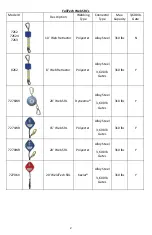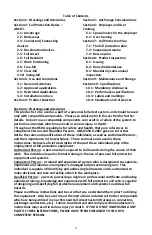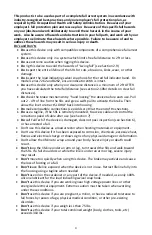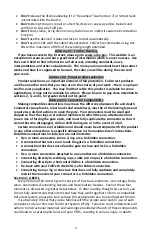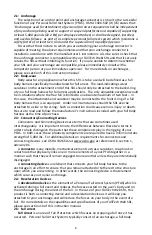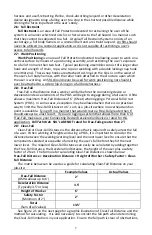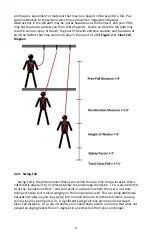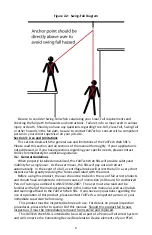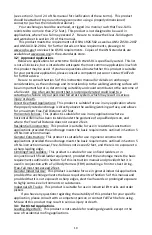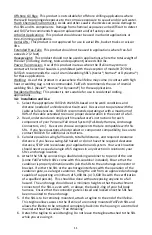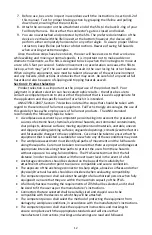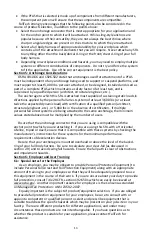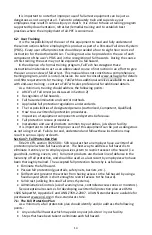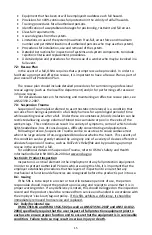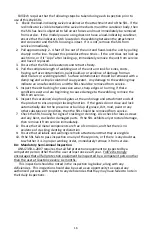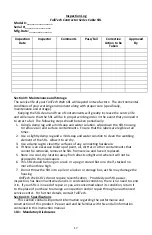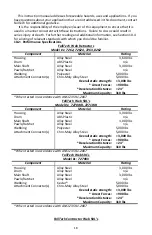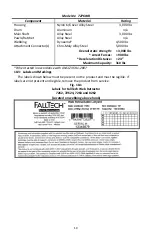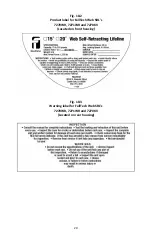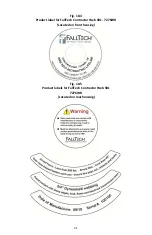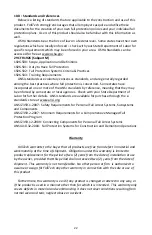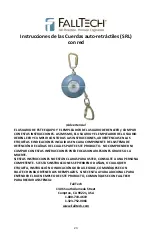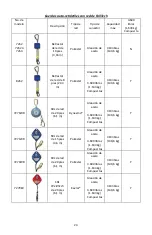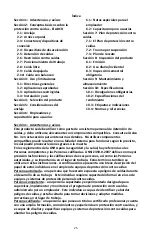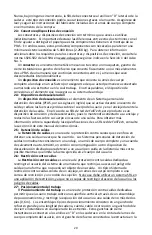
14
It
is
important
to
note
that
improper
use
of
fall
arrest
equipment
can
be
just
as
dangerous
as
not
using
it
at
all.
Failure
to
adequately
train
and
supervise
your
employees
may
result
in
serious
injury
or
death.
It
is
critical
to
have
a
training
program
supported
by
documentation,
refresher/remedial
training
and
to
establish
best
practices
where
the
employment
of
all
PPE
is
concerned.
6.2:
User
Training
It
is
the
responsibility
of
the
user
of
this
equipment
to
read
and
fully
understand
these
instructions
before
employing
this
product
as
part
of
a
Personal
Fall
Arrest
System
(PFAS).
Every
user
of
fall
protection
should
be
provided
a
four
to
eight
hour
course
of
instruction
for
the
Authorized
User.
Training
must
also
be
provided
in
the
use
of
each
component
of
the
user’s
PFAS
and
in
the
recognition
of
fall
hazards.
During
the
course
of
this
training,
the
user
may
not
be
exposed
to
a
fall
hazard.
In
the
absence
of
a
formal
training
program,
FallTech
has
designed
these
instructional
materials
to
act
as
an
abbreviated
course
of
instruction
in
an
effort
to
give
the
user
an
over
‐
view
of
fall
arrest.
This
manual
does
not
constitute
a
comprehensive
training
program,
and
it
is
not
all
‐
inclusive.
Be
sure
to
consult
www.osha.gov
for
details
on
OSHA
requirements
for
training.
FallTech
has
additional
services
available
to
assist
with
end
‐
user
training
–
contact
a
FallTech
sales
professional
for
additional
details.
As
a
minimum,
training
should
address
the
following
points:
ABCD’s
of
Fall
Arrest
(as
discussed
in
Section
2).
Recognition
of
fall
hazards.
Fall
hazard
elimination
and
control
methods.
Applicable
fall
protection
regulations
and
standards.
The
responsibilities
of
designated
persons
(Authorized,
Competent,
Qualified).
How
to
use
written
fall
protection
procedures.
Inspection
of
equipment
components
and
systems
before
use.
Fall
protection
rescue
procedures.
Installation
and
use
of
products
common
to
your
duties,
job
‐
site
or
facility.
It
is
important
to
note
that
improper
use
of
this
equipment
can
be
just
as
dangerous
as
not
using
it
at
all.
Failure
to
read,
understand
and
follow
these
instructions
may
result
in
serious
injury
or
death.
Section
7:
Fall
Protection
Plan
Title
29
CFR,
section
1926.500
–
503
requires
that
an
employer
have
a
written
fall
protection
plan
where
fall
hazards
exist.
The
best
way
to
address
a
fall
hazard
is
to
eliminate
it
entirely
or
to
employ
a
passive
system
to
restrict
access
to
the
hazard
(i.e.
guardrails,
netting,
covers,
etc.)
Fall
arrest
products
are
the
last
line
of
defense
in
the
hierarchy
of
fall
protection,
and
should
be
used
as
a
last
resort
by
employees
who
have
been
thoroughly
trained.
The
accepted
fall
protection
hierarchy
is
as
follows:
Eliminate
the
fall
hazard.
Passive
fall
protection
(guardrails,
safety
nets,
barriers,
etc.).
Fall
Restraint
(prevent
the
worker
from
having
access
to
the
fall
hazard
by
using
a
fixed
lanyard
which
is
short
enough
to
restrict
access
to
the
hazard).
Fall
Arrest
(utilizing
Personal
Fall
Arrest
Systems).
Administrative
Controls
(use
of
warning
lines,
controlled
access
zones
or
monitors).
Two
exceptional
resources
for
developing
a
written
fall
protection
plan
are
OSHA
1926
Subpart
M,
Appendix
E
and
ANSI
Z359.2
‐
2007.
All
ANSI
standards
are
available
for
purchase
at
www.ansi.org
in
the
e
‐
standards
store.
7.1:
The
Fall
Protection
Plan
As
a
minimum,
a
fall
protection
plan
should
identify
and/or
address
the
following
points:
Any
and
all
fall
hazards
which
may
exist
on
your
job
‐
site
or
in
your
facility.
Steps
that
have
been
taken
to
eliminate
each
fall
hazard.


